
Xenoblade Chronicles Definitive Edition Review
The original release of Xenoblade Chronicles on the Wii was an astounding technical feat: massive open fields with huge draw distances and impressive sweeping vistas, a day/night cycle with NPCs that all had schedules, a deep and complex battle system and an equally deep and interesting story. Monolith Soft had managed to create something most didn’t think the Wii was capable of.
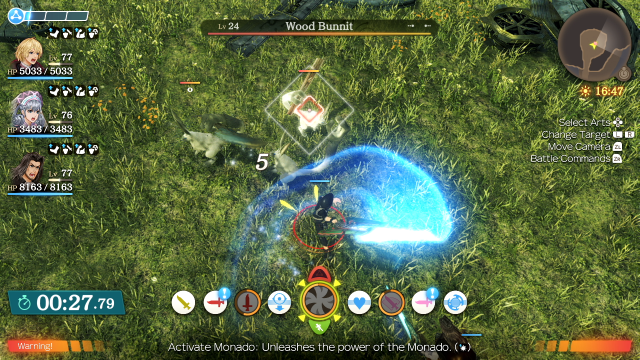
It was also involved in some drama at the time with Nintendo of America famously not wanting to localise it, for some reason assuming that Wii owners wouldn’t want a complicated Japanese role-playing game. Fortunately, Nintendo of Europe stepped in and we got what is probably the most gloriously British voice dub in a video game. More on that later!
So now, almost ten years since the Japanese Wii release Monolith Soft have released this so-called Definitive Edition on the Nintendo Switch. How does it stack up and is it really “definitive”?
Picking up a year after the battle of Sword Valley which saw the Homs — led by Dunban and his companions, Dickson and Mumkhar — make a stand against the Mechon army. We are introduced to our protagonist Shulk and his friends, Reyn and Fiora, just as all hell breaks loose as the Mechon return unexpectedly and attack their home.
This starts our heroes on their quest of revenge that inevitably ends up delivering a 45+ hours main story arc of betrayal, fear, love and friendship filled with interesting characters buoyed by the wonderful voice acting. This is all set in a world where everyone lives on two absolutely gigantic titans — the Bionis, home of the Homs, and the Mechonis, home of the Mechon — that had a big sword fight in the past.
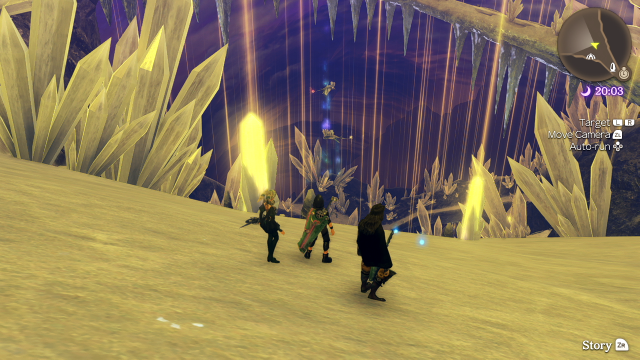
Upon first starting the game up you’ll be immediately smacked over the head by the improvements made in the visuals department. Of course, the jump to a modern HD platform stands out but almost everything has been touched in some way, from upgraded textures on almost everything to improved lighting and most notably vastly updated character models.
In many ways, the visuals have been brought closer to the standard used in Xenoblade Chronicles 2 and its DLC especially with regards to how characters now look. Sporting a much more expressive modern anime aesthetic with a brighter overall colour palette, it’s a massive improvement over the simple low polygon originals although arguably some of the unique charm has been lost with this more generic look. The original game had a look not too dissimilar to the PlayStation classic Vagrant Story. Reyn and Sharla are the most visible departures with Sharla looking quite a bit younger due to the overhaul!
Texture work across the board is fantastic with adjustments to how metallic and glowing materials look. Grass and foliage is also vastly improved although it’s sadly hampered by a fairly short cut-off point; this is also a flaw in the original but it was disguised a little by the lower resolution. It’s actually pretty amazing how wonderful some of the areas in the game look now; Satorl Marsh and the Eryth Sea especially really pop due to fantastic use of bloom and saturated colours.
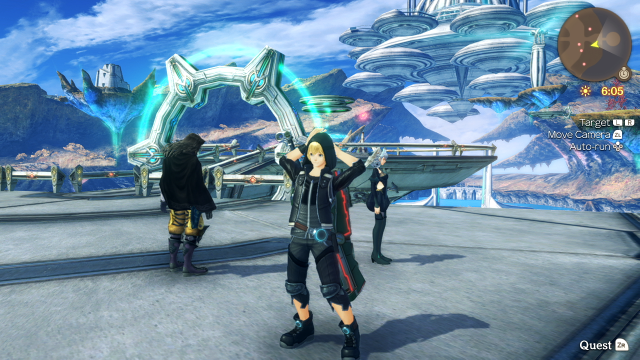
It’s a testament to how gorgeous the world was on the Wii that with some spit and polish it can hold up to modern games so effortlessly. Not all areas have been touched as much as others but it still all looks great.
Aurally the game has seen some love too. Most of the game’s already stunning battle and exploration tracks have been remastered, either using a live orchestra or with some rejigging in the studio but they all sound great. Not better per se, but definitely different enough that they are a treat to listen to, and you can also switch between the old and new tracks at any time for both battle and exploration which is a lovely touch.
What about voice work? Well, as mentioned up top, Xenoblade Chronicles has an extremely quirky British cast, with the likes of Jenna Coleman as Melia, Rufus Jones as Dunban and a whole slew of recognisable talent from TV (Including Peppa Pig’s Dad) along with recognisable gaming voices such as Adam Howden as Shulk, and Xenoblade series mainstay Carina Reeves as Fiora. It has a distinct feel because of this and although no new voice work was done for the base game, it definitely sounds a lot better here presumably as a result of better compression.
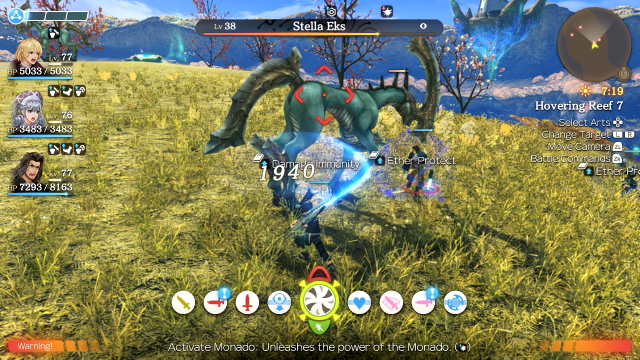
The Japanese dub is also available should you wish to use that instead and can be switched to at any point just like the music tracks. It’s a shame that the previously voiceless Heart-to-Hearts, short conversations between characters as they get to know each other better, are still unvoiced here.
Outside of the visuals and audio though, what has been changed? Quite a lot actually. The original Wii title was extremely ambitious and content rich with hundreds of side quests over the course of the game. It also had hundreds of characters who doled out these tasks but did very little to help you organise or find them or their objectives. Definitive Edition really goes to town with improvements here: not only does it allow you to track quests with a handy dotted line leading the way, but it also shows objectives on the map and in the world with icons above collectables and characters.
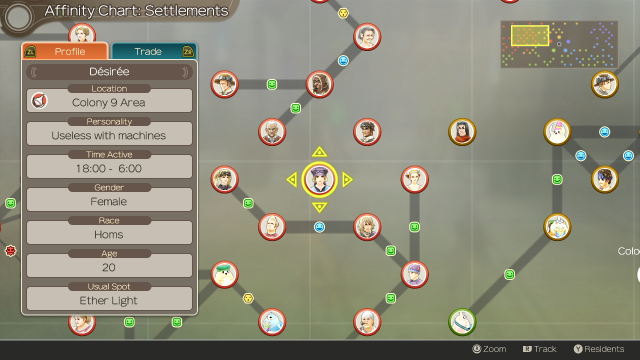
Not only this but you can now track individual characters from the Affinity chart, marking them on your map and also see at a glance what everyone has for trade without having to remember what they have to offer. There are a number of these quality of life tweaks all over the game’s redesigned menus, from having a better overview of equipment and stats to being able to move slotted gems easily into a new piece of armour without having to do them one by one.
This also extends into combat which plays kind of similarly to Final Fantasy XII in that your characters will auto-attack enemies when in range leaving you to focus on positioning and using your Arts (the games name for special abilities) wisely to get the upper hand. Quality of life improvements aplenty here too, from a generally much cleaner interface all around, including having the targeted enemies health in a permanent spot on screen rather than as a floating nameplate like in an MMO, to having a less intrusive Arts palette and character health display.
Some of this stuff comes from having more screen real estate to play with compared to the Wii original but it’s welcome nonetheless. One of the main elements of combat is the trinity of Breaking, Toppling and Dazing enemies; characters have moves that can inflict these ailments on an enemy and if you can perform them in that order you heavily impact the enemies ability to fight back.
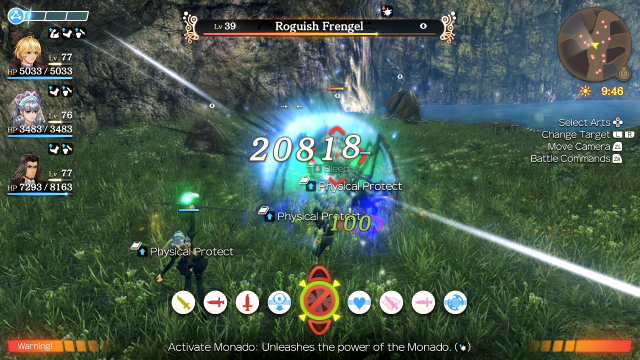
Breaking does nothing on its own but is necessary to Topple an enemy. This knocks them down and renders them unable to dodge, and it also increases how much damage you can do. Once Toppled an enemy is then open to being Dazed: this has the same benefits as Toppling the enemy but also stops characters from attracting aggro and can also cause the enemy to cancel its own big Arts which can be critical.
All of these statuses can be extended by hitting the enemy with appropriate Arts but in the original game it only showed that they were suffering from them, not how long was left before they sprang back to life to murder you. Definitive Edition makes this easier to track by including timers for these effects as well as giving more space to icons showing poison, chill and similar effects. It also shows alerts on Arts that require specific conditions so you know when you should use them!
Nearly every area of the game has been touched in this way with nips and tucks to almost every menu or interface element and it really helps to keep the game feeling modern without taking away from the original design. The game also includes things to make it more approachable for newcomers. Casual Mode — which you can toggle from the options menu at any time (or when prompted if you die to an enemy or boss multiple times) — makes combat easier by having you deal double damage, whilst enemies deal half, along with eliminating accuracy penalties for higher level enemies amongst other things.
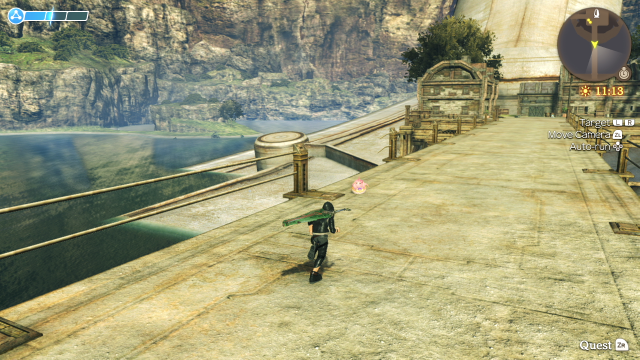
This helps to eliminate the feeling that you need to grind (although if you are staying on top of side quests you will probably be keeping up level wise quite comfortably). If you are having problems with a boss for example, you can toggle it on to get past a sticking point then turn it off again. On the opposite side, there is the so-called Expert Mode. This let’s you disable levelling and let’s you rollback your character to a specific level, from then on any experience you gain will be pooled and you can choose to spend it later.
This is very similar to how you’d level up in Xenoblade Chronicles 2 and it’s a nice option to see backported to this game. Whilst its use might seem limited it does allow for much greater control over how much experience you can earn, as you can simply match your character to your favourite areas for killing monsters rather than having limited choices for enemies near your level as you approach the end of your adventure. This makes the most sense if you are trying to do post-game activities (like killing superbosses or preparing for New Game Plus etc.) and want to finetune your characters but it has utility elsewhere.
I do think them being named Casual Mode and Expert Mode is unfortunate and doesn’t really do either feature justice, Casual Mode sounds like a backhanded jab at players that perhaps haven’t struggled so far but suddenly hit a boss that they are having trouble with, and Expert Mode isn’t really just for “experts”. Either way they are both nice optional features you can take advantage of.
The other major selling point of Xenoblade Chronicles Definitive Edition is that it comes with new story content in the form of a separate adventure entitled Future Connected you can launch immediately that takes place a year after the end of the main game. Be warned that you really shouldn’t play this first unless you’ve finished the game in the past as it opens up with the final moments of the original story.
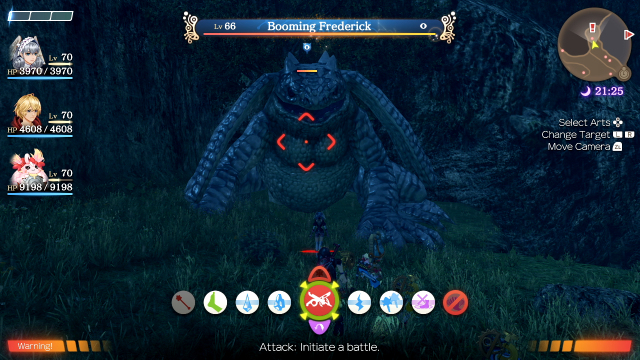
I won’t spoil anything but Future Connected acts as a solid epilogue to the main game, letting you see how characters that perhaps didn’t get full closure in the original story are doing and how events have affected them in the months since. It features a new enemy which hints at potential mysteries for the series going forward whilst acting as a fond farewell to a cast of characters that you’ve hopefully grown quite attached to.
Future Connected itself takes place on the Bionis’ shoulder which was a location originally cut from the Wii original (although it did exist in a basic form in the game’s files) which for fans is wonderful to see it fully realised. It also rejigs some of the mechanics to streamline how it plays: gone are Chain Attacks for example, instead replaced by Union Attacks performed by a group of Nopon you’ll befriend as you work your way through the story. Gem Crafting is also simplified by being removed and you getting full gems from mining.
These changes seem harsh but they make sense given the limited scope of the adventure. The two main Nopon allies that accompany you, Kino and Nene, are adorable and contribute some of the funniest and heartwarming conversations in the whole game. It’s actually quite nice having some new characters to interact with that flesh out Shulk and Melia’s characters somewhat. It makes it clear that this is a specific story for specific characters.
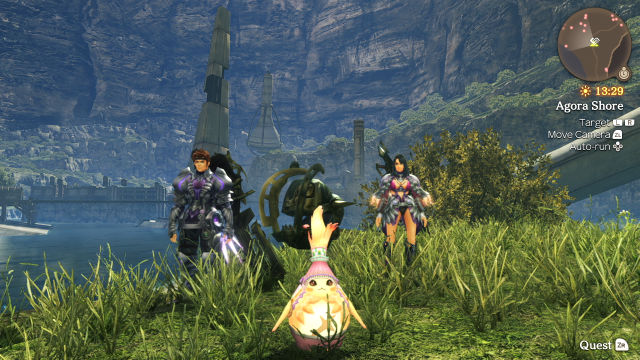
All in all, Future Connected took me 15 hours to complete all the side quests and see the credits and as an added bonus to the core remastered game it is a solid addition. On top of the potentially 100+ hours of the original game (for the record this playthrough was around 70 hours, as I slowly dropped off from side quests as I got near the end), there is a lot to enjoy here.
So is it the definitive version of the game? I’d say it definitely is! Even though the game does have a few issues that are a shame, docked resolution being 720p rather than anything higher with handheld play being capped at 540p for example (although in fairness that’s the same as the sequel and it never felt like it dropped below those figures too much in the grand scheme of things). This never stops it looking anything other than gorgeous however.
Could they have done a few more tweaks? Sure they could, given more time and money but that all feels like minor nitpicking to a game that has fixed almost every issue from the original Wii release, and it feels like Monolith Soft poured all they could into it. It’s still one of that generation's best titles and it’s now one of this generation's best titles, and if you have an interest in JRPGs at all you should really play this one.
Xenoblade Chronicles Definitive Edition (Reviewed on Nintendo Switch)
Excellent. Look out for this one.
A thoughtful update to a classic JRPG that brings it to a whole new audience. With a shiny lick of paint and some fantastic interface changes it’s the best way to experience Shulk, Fiora and Reyn’s epic adventure.



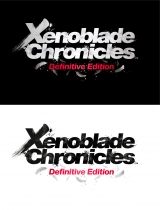






COMMENTS